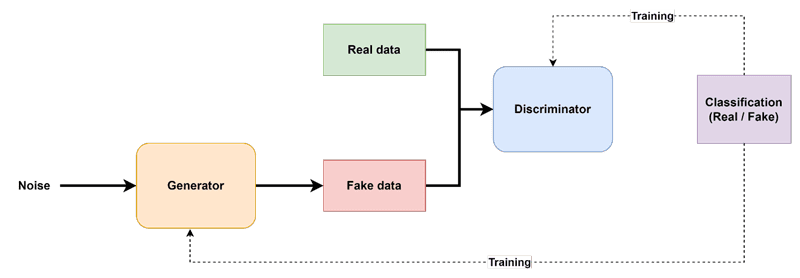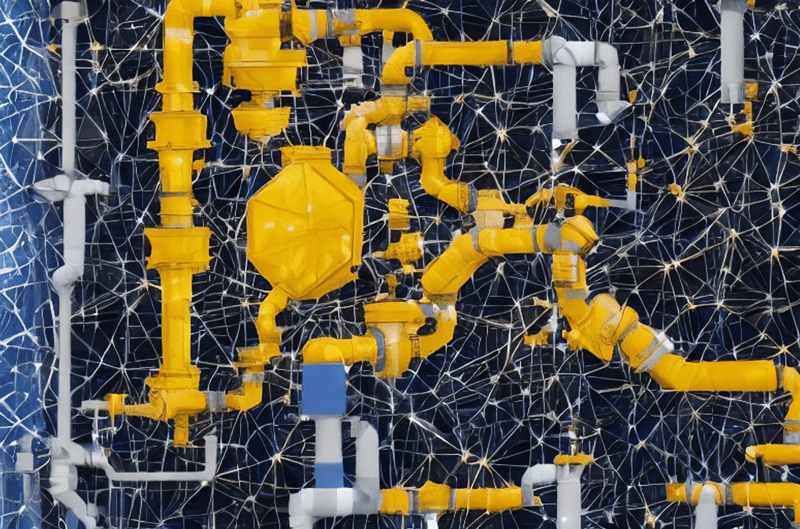Generative artificial intelligence (AI) is a cutting-edge innovation that can generate and consume original content without any human intervention. This content could be anything from language and visual creations to audio and full-length videos. The possibilities are endless. This separates it from conventional machine learning algorithms that rely on existing data to categorize and draw inferences. According to the research report, the global generative AI market size was estimated at USD 10.63 billion in 2022 and is expected to reach USD 200.73 billion by 2032, growing at a CAGR of 34.2 percent during the forecast period. As per an Ernst & Young survey, 92 percent of global oil and gas companies are investing in or plan to invest in AI within the next two years.
Generative AI, like all other forms of AI that currently exist, is a product and research area of machine learning (ML). While conventional computer algorithms are programmed by humans to tell a machine “on what” to do, the quality of an ML algorithm increases with the amount of data provided. When these algorithms are combined and allowed to generate fresh data based on their discoveries, they form a model, which is an engine that is tailored to produce specific data.
There are various types of models used in generative AI, such as Large Language Models (LLMs) based on transformers, diffusion models, and Generative Adversarial Networks (GANs). This article explores the fundamentals of GANs, their operational mechanisms, and their applications in solving specific use cases in the upstream oil and gas industry.
Understanding GANs
GANs, introduced by Ian Goodfellow and his colleagues in 2014, are a method of generative modeling that uses convolutional neural networks deep learning techniques to discover and learn patterns in input data. GANs train a generative model by dividing the problem into two sub-models along with the training process:
- Generator: The generator model initiates the process by creating synthetic data, starting from random noise. Through successive iterations, it refines its output to produce data that closely resembles real-world information.
- Discriminator: The discriminator’s primary role is to differentiate between real and fake data. As it receives both types of samples, it continuously improves its ability to discern between the two. The training process involves refining the discriminator’s bias capabilities.
- Training Process: The generator and discriminator work collaboratively during the training process. The generator refines its synthetic data creation, while the discriminator enhances its ability to distinguish between real and fake data. This iterative training continues until an equilibrium is reached, whereby the generator produces data confronting the discriminator’s biased ability.
Here’s an illustration to explain the whole system:

GANs are a rapidly evolving field that can generate realistic examples across various problem domains, particularly in image-to-image translation tasks and generating realistic photos of objects, scenes and people that humans cannot discern as fake. Original music can also be generated from a database of songs. Isn’t it interesting?
Solving Use Cases in Upstream Oil and Gas with GANs
In the rapidly evolving landscape of the upstream oil and gas industry, the integration of cutting-edge technologies is essential to address complex challenges and enhance operational efficiency. Over the last few years, GANs have emerged as a transformative force, offering innovative solutions to intricate problems within the upstream sector. Here are a few use cases where GANs can provide significant improvements.
Seismic Data Enhancement
Subsurface imaging relies heavily on seismic data interpolation, which makes analysis and interpretation possible at every stage of the seismic processing workflow. One of the primary challenges in seismic data analysis is the limited availability of diverse labeled datasets. GANs address this issue by generating synthetic seismic images that closely resemble real data. This enhanced dataset includes variations that are not present in the original data, providing a more comprehensive representation of potential subsurface conditions.
Seismic processing methods frequently presume that data is sampled frequently in space, but acquisition methods, especially in maritime environments, seldom do this. Before any processing, data with significant gaps and asymmetric sampling should be regularized and interpolated. This is a critical requirement since it is essential for investigating data sources, creating wavefields with regular shapes, and completing data gaps. The interpolation of these photos can be accomplished by GANs. Bad traces can be repaired with the aid of GANs, allowing for the use of better and more comprehensive data for analysis. Moreover, it can be expanded to raise the image resolution.
Predictive Maintenance through Anomaly Detection
GANs facilitate predictive maintenance and are an effective tool for anomaly detection. GANs are capable of simulating typical machinery and equipment working circumstances, producing artificial instances that correspond to the typical behavior of the system. An anomaly is any departure from regular patterns and, by making changes to the taught typical behavior, GANs can create artificial abnormalities.
To differentiate between normal and anomalous patterns in the data, these artificial anomalies can be used to train anomaly detection models, such as autoencoders or Bayesian Support Vector Machines (BSVMs). By identifying variations suggestive of possible problems or malfunctions, GAN-based anomaly detection models enable proactive maintenance and minimize downtime. Furthermore, GANs can be retrained to recognize novel normal patterns and produce related anomalies because of their ability to adjust to changing circumstances. As models are exposed to a broader variety of normal and non-normal patterns, they can cope with sparse anomaly data, reduce false positives, and improve generalization.
Drilling Optimization
Drilling operations can be made more efficient by GANs with enhanced restricted datasets and optimized drilling parameters. By learning typical drilling patterns, GANs can also assist in locating any faults or abnormalities during drilling operations. They can develop models to help real-time decision-making during drilling, producing forecasts and insights to improve the procedure in real time. To improve planning and decision-making, GANs can also be utilized for geological and formation modeling. This allows for the creation of realistic models of subsurface conditions.
They can aid in the creation of cognitive drilling systems, which can modify parameters in real-time to improve drilling efficiency, as they continuously learn from and adapt to the changing drilling environment. Drilling optimization procedures can be more reliable when uncertainties are reduced by using GANs to generate synthetic data that simulates various geological conditions and uncertainties. Furthermore, by reducing the need for actual trial and error during drilling operations and enabling operators to try various techniques in a virtual setting, GANs can save costs through simulation.
Challenges
Despite the promising applications of GANs in the upstream oil and gas industry, challenges persist. Generative AI models require fast data pipelines, significant capital investment, and large-scale computer infrastructure to train millions or billions of images needed for GANs. Massive computing power is required, demanding hundreds of Graphics Processing Units (GPUs) for training. Cloud computing is often used, but usage can escalate with the demand for more powerful hardware. Energy costs are high due to computationally intensive models. A robust and scalable storage infrastructure is needed for managing large datasets. GANs can sometimes suffer from mode collapse, where the generator produces limited and repetitive samples, failing to capture the diversity of the target distribution.
Advancements
The trajectory of GAN applications in the upstream oil and gas industry continues to evolve. Ongoing research and development are expected to lead to more sophisticated applications, addressing current challenges and unlocking new possibilities for optimizing upstream operations. From enhancing seismic data to predictive maintenance and drilling optimization, recent advancements in GAN applications showcase their versatility and transformative potential. As the industry continues to leverage these technologies, GANs stand at the forefront of innovation, reshaping upstream operations and propelling the sector toward a more efficient, sustainable and technologically advanced future.
Headline photo courtesy of Abhay Paroha.
Abhay Dutt Paroha is an experienced software engineer and technology leader at Schlumberger (SLB), having held critical roles for over 15 years at various large organizations. Passionate about utilizing modern technologies to solve real-world problems, Paroha leads a team of highly skilled and equally passionate engineers in creating cutting-edge global software applications for the exploration and production of crude oil and natural gas. These applications leverage microservice architectures, cloud computing, machine learning, artificial intelligence and DevOps.
Oil and gas operations are commonly found in remote locations far from company headquarters. Now, it's possible to monitor pump operations, collate and analyze seismic data, and track employees around the world from almost anywhere. Whether employees are in the office or in the field, the internet and related applications enable a greater multidirectional flow of information – and control – than ever before.




